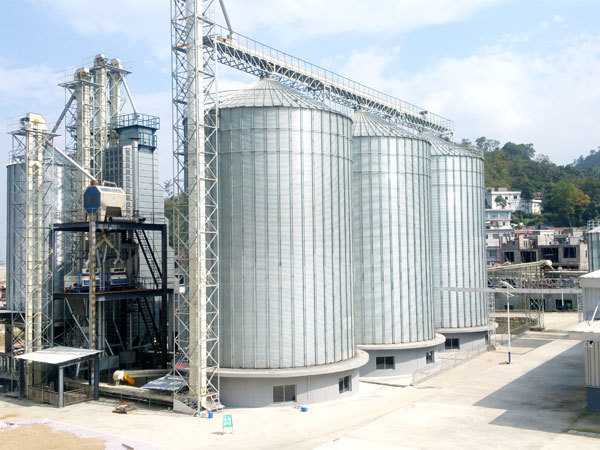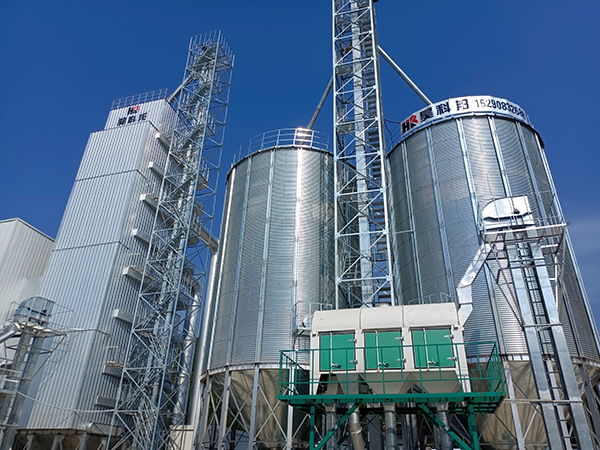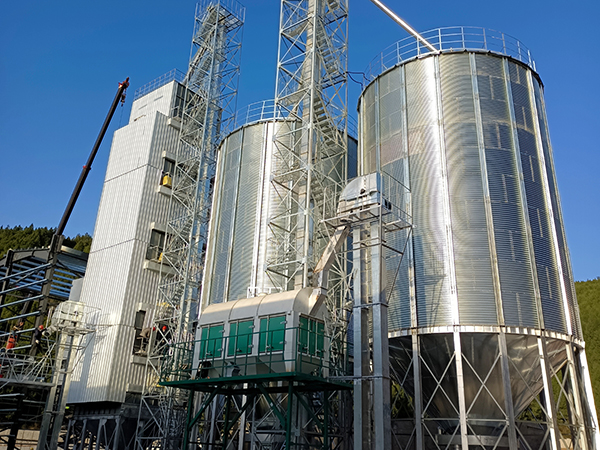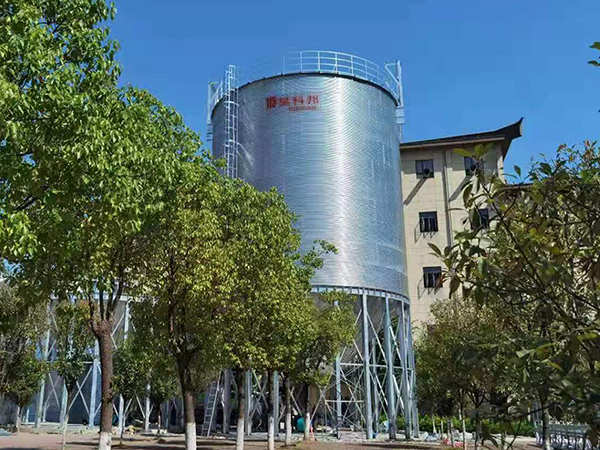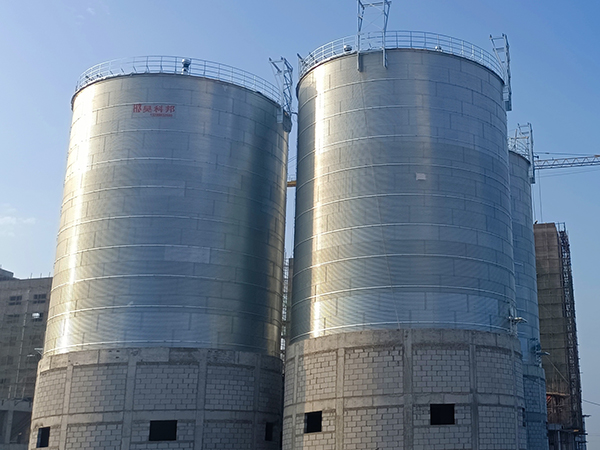Soybean seed silo
Soybean seed silo are specialized agricultural facilities designed for the storage of soybean seeds. These silos aim to provide an ideal storage environment
Soybean seed silo Introduction
Soybean seed silo are specialized agricultural facilities designed for the storage of soybean seeds. These silos aim to provide an ideal storage environment for maintaining the quality and viability of the seeds, ensuring high germination rates and good growth potential at the time of planting. The construction and management of soybean seed silos play a significant role in agricultural production as they not only guarantee the quality and quantity of seeds but also provide a stable supply for the planting season, supporting the continuous development of agriculture and food security.
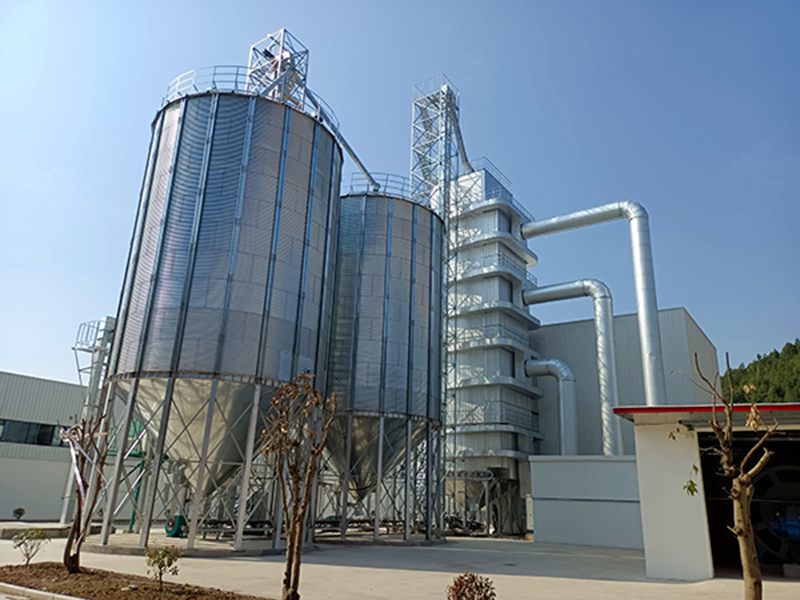
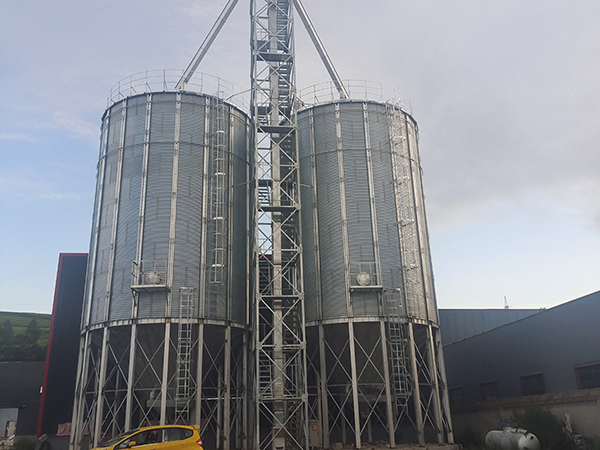
Soybean Seed Silo Features
Environmental Control
By precisely controlling the temperature, humidity, and ventilation within the silo, an appropriate environment is maintained to keep the seeds viable and extend their lifespan.
Sealing Performance
Good sealing performance prevents the entry of moisture, pests, and other factors that could damage the seeds.
Loading and Unloading System
To facilitate the movement of seeds, silos are equipped with dedicated loading and unloading systems, such as conveyor belts and elevators, to improve efficiency.
Monitoring and Control System
Modern soybean seed silos may include automated monitoring and control systems for real-time surveillance of the environment and seed status within the silo.
Safety Measures
The silo design incorporates fire prevention, pest control, and rodent control measures to ensure the safety of the seeds.
Cleaning and Maintenance
The silo’s structural design facilitates cleaning and maintenance work to keep the internal environment sanitary and the seeds in good quality.
Space Utilization
The vertical design of the silo effectively utilizes space, allowing for the storage of a larger quantity of seeds on limited land.
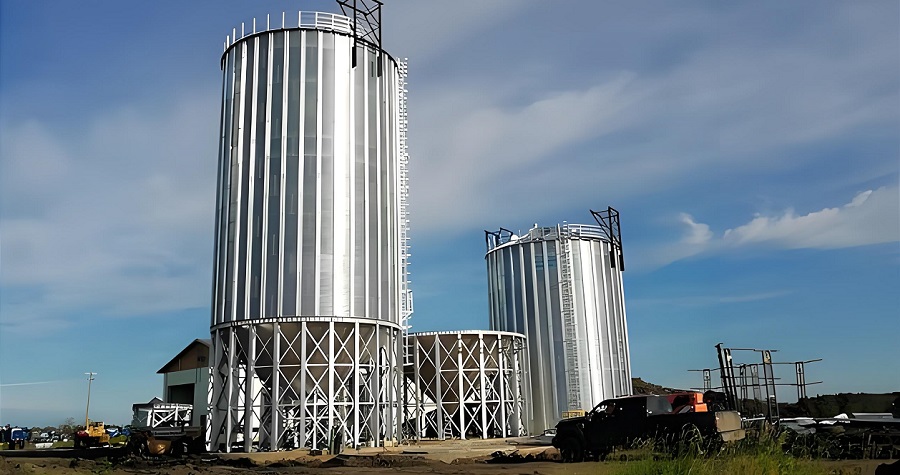
Soybean seed silo structure
Silo Body
The main part of the silo, usually made of high-strength steel, forms a cylindrical or rectangular structure. The interior of the silo body is treated to resist moisture and chemical reactions that may occur during the storage of soybean seeds, ensuring the durability of the silo and the quality of the seeds. The thickness and material of the silo body are designed based on factors such as the silo’s capacity, local climate conditions, and expected service life.
Conical Base
The bottom of the silo is designed with a conical shape, which facilitates the natural flow of soybean seeds due to gravity, reducing resistance and equipment requirements during discharge. The angle of the conical base is optimized based on the flowability of the soybean seeds, the capacity of the silo, and other factors to ensure optimal self-flow performance and minimal residue.
Ventilation System
The top and bottom of the silo are equipped with ventilation openings or ducts to regulate the temperature and humidity inside the silo, preventing the seeds from becoming damp, overheating, or molding. The ventilation system may include natural ventilation, forced ventilation, or intelligent temperature and humidity control devices, adapted to different storage conditions and characteristics of soybean seeds.
Inlet and Outlet Devices
These include inlets, outlets, gates, conveyor belts, elevators, and other equipment. The inlet is typically located at the top or side of the silo, equipped with dust-proof and rain-proof facilities to ensure the cleanliness of the soybean seeds during storage. The outlet is situated below the conical base, and by controlling the opening of the gate, it allows for the quantified, continuous, or intermittent discharge of soybean seeds. Conveyor belts or elevators are used to transport the seeds from the outlet to subsequent processing or transportation equipment.
Sealing System
The top, bottom, and connecting parts of the silo use high-quality sealing materials and techniques to ensure the airtightness of the internal environment of the silo, preventing external moisture, dust, insects, and other contaminants from affecting the soybean seeds. The sealing system should also have good weather resistance, wear resistance, and anti-aging properties to ensure long-term sealing effectiveness.
Safety Protection Facilities
These include explosion-proof devices, fire-fighting facilities, safety warning signs, emergency escape routes, etc., ensuring the safety of personnel during operation, maintenance, and emergency situations.
Monitoring and Control System
Equipped with sensors for temperature, humidity, material level, etc., the system monitors the internal environment parameters and the state of the soybean seeds in real-time. The control system adjusts the working status of the ventilation equipment automatically based on the sensor data, maintaining suitable storage conditions. Some advanced silos are also equipped with remote monitoring and early warning systems for intelligent management of the silo.
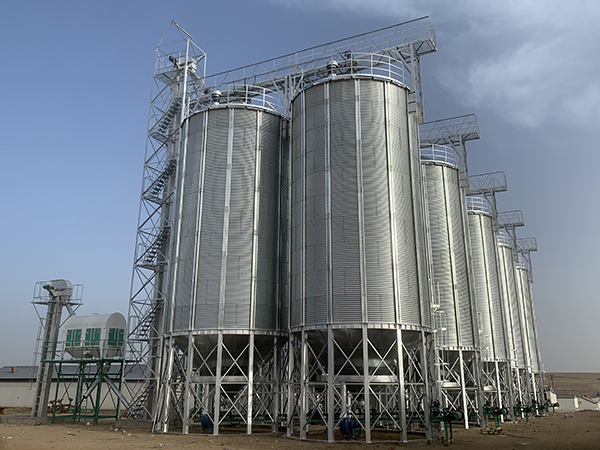
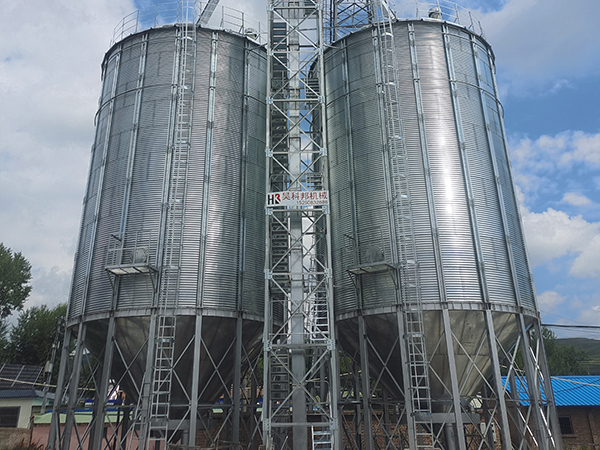
Soybean Seed Silo Advantages
High Capacity Storage
The silo is designed with a large capacity, allowing for the centralized storage of significant quantities of soybean seeds. This enhances storage efficiency and space utilization, catering to large-scale production or trade requirements.
Good Self-Flow
The conical base design ensures that soybean seeds naturally form a slope within the silo. During discharge, the seeds can flow smoothly relying on gravity alone, without the need for additional powered equipment, greatly improving discharge efficiency.
Reduced Residue
Compared to flat-bottom silos, the conical base structure prevents accumulation of seeds at the bottom, resulting in minimal residue. This increases the utilization rate of storage space and reduces material loss.
Anti-Arching
The conical bottom helps to distribute the pressure of the accumulating seeds, reducing the risk of arching that can occur due to moisture and compaction during extended storage periods. This ensures the seeds are evenly distributed within the silo, facilitating subsequent discharge.
Ventilation
Silos are typically equipped with a ventilation system that, combined with the conical base design, promotes even air circulation through the seed pile. This helps to keep the seeds dry, preventing mold and overheating.
Pest Control
The absence of accumulation死角 (dead corners) at the bottom of the conical silo reduces the formation of damp, dark environments, lowering the risk of pest and microbial infestations, and helping to maintain seed quality.
Easy Cleaning
The conical structure results in a smaller bottom area with no dead corners, making cleaning tasks easier. Whether through mechanical sweeping or manual clearing, the process can be efficiently completed, reducing maintenance costs.
Structural Stability
The conical design places the silo’s center of gravity lower, enhancing the overall structural stability. This is particularly beneficial in withstanding external forces during extreme weather conditions such as earthquakes or strong winds, ensuring the safe use of the silo.
Adaptability to Environment
The design of the silo can be adjusted for insulation, heat resistance, and ventilation according to different climatic conditions and the characteristics of soybean seeds, ensuring suitable storage conditions in various environments.
Intelligent Management
Modern soybean seed silo are often equipped with monitoring devices for temperature, humidity, and material level, as well as automated control systems. These enable real-time monitoring and remote management of the silo’s internal environment, increasing the precision and efficiency of storage management.
Application scope of Soybean Seed Silo
Coban Silo is widely used for grain storage such as wheat, corn, soybean, paddy, rice, soybean meal, barley, malt, sunflower seeds, rapeseed, peanuts, flour, and other powder materials, oat, special Silo, and seeds, etc.

Soybean Seed Silo technical parameters
Scientifically speaking, the Silo capacity should be measured with volume (m3). Even in the same grain Silo, the storage tons will be different for different grains with different densities. The following table is calculated based on a Silo density of 0.75kg/m3, and surely HKB customizes Silo systems unique for you.
| Most Popular Hopper Bottom Steel Silo Technical Specifications | ||||||||
| Capacity | 50Ton | 100Ton | 150Ton | 200Ton | 300Ton | 500Ton | 1000Ton | 1500Ton |
| Model | TCZK
03605 |
TCZK
04507 |
TCZK
05507 |
TCZK
06406 |
TCZK
07307 |
TCZK
07313 |
TCZK
11010 |
TCZK
12811 |
| Diameter(m) | 3.667 | 4.584 | 5.500 | 6.417 | 7.334 | 7.334 | 11.000 | 12.834 |
| Total Height(m) | 9.56 | 12.53 | 13.25 | 12.85 | 14.70 | 21.42 | 20.95 | 23.51 |
| Volume(m³)
Density:0.75ton/m³ |
69 | 150 | 222 | 273 | 415 | 699 | 1346 | 2039 |
| Most Popular Flat Bottom Steel Silo Technical Specifications | ||||||||
| Capacity | 1000Ton | 1500Ton | 2000Ton | 2500Ton | 3000Ton | 5000Ton | 8000Ton | 10000Ton |
| Model | TCK
10014 |
TCK
11915 |
TCK
13715 |
TCK
15514 |
TCK
15518 |
TCK
18321 |
TCK
24718 |
TCK
25621 |
| Diameter(m) | 10.084 | 11.918 | 13.750 | 15.584 | 15.584 | 18.334 | 24.751 | 25.668 |
| Total Height(m) | 18.69 | 20.34 | 20.87 | 20.30 | 24.78 | 28.60 | 26.99 | 30.60 |
| Volume(m³)
Density: 0.75ton/m³ |
1335 | 2009 | 2701 | 2467 | 4145 | 6693 | 10879 | 13484 |

